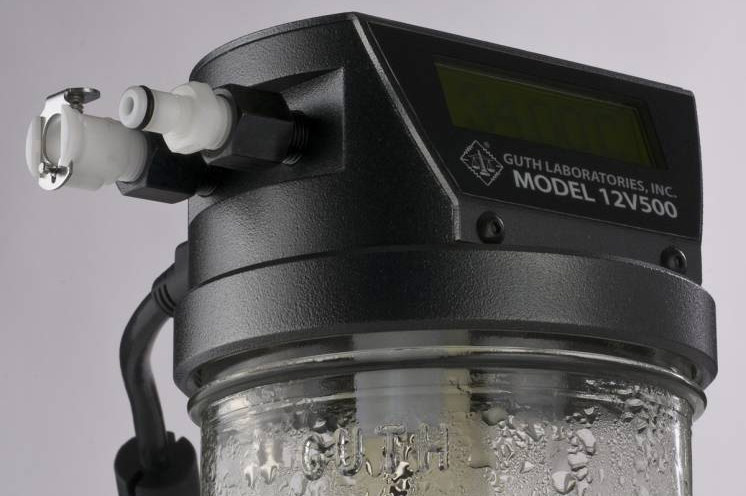
NHTSA and DOT outline in great detail their calibration procedure
“3.1 TEST PROCEDURE (ORIGINAL, WET-BATH CALIBRATING UNITS)
Equipment and Supplies: Gas Chromatograph capable of complete resolution of ethanol in test samples, with heated gas sampling valve. Water bath thermostated at 34 °C ± 0.1 °C. Glass Reference Sample Bottles (300 ml capacity or greater) with Stopper and Inlet and Outlet Air Hoses (see Figure 1). Hoses should be about 1/8” OD Teflon tubing. Reference Ethanol Solutions prepared using Class A glassware and American Chemical Society reagent grade ethanol or USP grade ethanol. The purity of the ethanol used shall be compared with the National Institute of standards and Technology (NIST) Standard Reference Material for ethanol. Use the value of Harger, et al., for the partition ratio for concentration of ethanol in headspace to concentration in solution at 34 °C, Ka/w = 0.000393 [4] to prepare two solutions which, when thermostated at 34 °C, produce headspace ethanol vapor concentrations that bracket the test BrAC by no more than ± 20%. Small Air Pump for bubbling air through reference solutions (see Figure 1).
Step 1. Prepare the Gas Chromatograph for measurement of vapor samples. Adjust instrument temperatures, gas flows, detector, and recording device for optimum response for ethanol. Prepare the CU for use according to manufacturer’s instructions.
Step 2. Fill two reference solution bottles to 3/4 full with above reference solutions. Insert stopper assemblies with bubble line and alcohol vapor line in place and put bottles in the water bath with water level up to the stopper. Connect air pump to bubble line. Connect alcohol vapor line to gas chromatograph sampling valve inlet fitting. Allow 1 hour for temperature equilibrium to be achieved.
Step 3. Turn on air pump which has been pre-set to pump air through the reference solution bottle-gas chromatograph sampling assembly at a rate just sufficient to thoroughly flush the system in 10 seconds. After flushing is complete, allow the sample to relax to atmospheric pressure, then inject the reference sample onto the gas chromatograph column. In this way, obtain 5 chromatograms of one of the reference solution headspace ethanol vapors.
Step 4. Thoroughly flush the sample loop with vapors from the CU device, while avoiding over-pressurizing of the sampling system. To prevent condensation of alcohol, warm the transfer line if necessary. Allow the sample to relax to atmospheric pressure, then inject the sample onto the column. In this way, obtain 10 ethanol chromatograms using the CU device.
Step 5. Repeat step 3 using the second reference solution.
Step 6. Calculations. Peak height to BrAC conversion factor. For each ethanol peak obtained in Step 3 and Step 5, calculate a conversion factor for ethanol concentration by dividing the equivalent BrAC of the vapor sample by the peak height obtained for that sample. From the 10 samples, obtain the mean and the RSD of the conversion factors. If the RSD obtained fails to meet the criteria for RSD in 3.0, perform necessary troubleshooting and repeat the procedure from Step 1. Use the mean of the conversion factors to calculate the BrAC for each of the 10 ethanol peaks obtained in Step 4. Calculate the mean, the RSD, and the systematic error of the experimental BrACs.”
Full documents available here:
https://www.federalregister.gov/documents/2007/06/25/07-3060/highway-safety-programs-model-specifications-for-calibrating-units-for-breath-alcohol-testers



